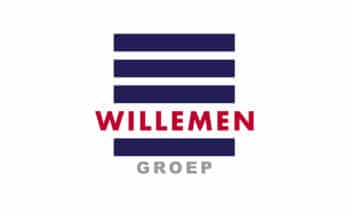
Galvanized steel as a sustainable building block in the circular economy
Galvanized steel is a textbook example of a circular building material. Assemble, disassemble, reuse or recycle? Once galvanized, steel can take more than one hit. It fits perfectly into a future where circular construction is increasingly coming to the fore. That is what EGGA, the European sector organization of hot-dip galvanizers, puts in black and white in a recent publication.
'Galvanized Steel and Sustainable Construction: Solutions for a circular economy'
That galvanized steel is one of the most durable building materials, the European General Galvanizers Association (EGGA) has long been convinced. And they are right. You soon notice this when you read their latest publication. In 'Galvanized Steel and Sustainable Construction: Solutions for a circular economy', the sector organization lists all the strengths of galvanized steel.
The construction industry: a vital link in the circular economy
To halt the climate problem, the EU is putting a transition to a circular economy high on the agenda. After all, more conscious use of materials and raw materials helps our planet in two
ways: by making better use of scarce resources, we avoid large amounts of CO2 emissions at the same time.
The construction industry can also make a (particularly large) contribution to this. Looking at the entire life span of a building, we see that construction has a major impact on the main environmental parameters.
- 50% from extracted raw materials;
- 50% of total energy consumption;
- 33% of water consumption;
- 35% of waste generation.
Circular construction models, where materials continue to circulate in a closed loop, can significantly reduce the environmental impact of the construction industry. We must therefore look for solutions to preserve the value of building materials for as long as possible, instead of discarding them as waste after use. This will already bring us a big step closer to a climate-neutral Europe in 2050.
However, it is not only climate goals that are driving circular strategies. More and more architects, property developers and other building professionals are also becoming convinced of a more forward-looking construction sector, where climate, material consumption and reuse, waste reduction and functional adaptations are taken into account right from the design table.
How does galvanized steel fit into the picture?
Steel and steel structures lend themselves perfectly to numerous applications in our society. From technology, transportation, agriculture and industry to infrastructure and buildings. Once galvanized, steel becomes a maintenance-free solution that extends the life of all these applications.
Moreover, you can easily disassemble galvanized steel structures and reuse them elsewhere. They stand the test of time with flying colors and retain their value, strength and flexibility almost indefinitely.
Galvanized steel is therefore a particularly rewarding material for architects considering circular building designs. It scores especially well on its potential to reuse, repair and refurbish, three of the core principles of circular construction.
The R's of circular building
The R's of the circular model show how to best use and reuse raw materials.
Conclusion: hot-dip galvanized steel is ideal circular building material
The durability, robustness and - at the same time - flexibility of galvanized steel offer many opportunities for circular construction. It is easy to reuse, requires no maintenance, does not need to be replaced and thus provides future-oriented buildings with minimal impact on the environment.
You would almost think that the hot-dip galvanizing process was developed specifically for circular construction processes, but nothing could be further from the truth: it is almost two centuries old. It is the most efficient way to protect steel from rust, and it will most likely remain so.
A fine example? That is the rebirth of this 1976 Dutch stand: a strong example of zinc, the stand of SV Gramsbergen
Harry Haverkotte, a former board member of the Dutch Sports Association Gramsbergen, snapped up this old stand (pictured left) in 2011 for a mere €7,000. He rescued the structure from the scrap heap and, together with some enthusiastic volunteers, rolled up their sleeves to restore the 1976 gem to its full glory.
After 2 years and € 35,000 for reconstruction and finishing, the beautiful covered grandstand stood as-well-as-new next to the field. A completely new grandstand had quickly cost the club €200,000. Every part of the old grandstand was given a second life, except the bolts, nuts and wooden boards. Is it due to Dutch thriftiness or did the man have an eye for circular construction avant-la-lettre?
Just goes to show that even after 40 years of exposure to rain, wind and hail, the galvanized steel structures were still in fine condition. Ready to shelter lavish fans from those same weather conditions for decades more.
Want to learn more about how galvanized steel fits into circular construction?
Find out in "Galvanized Steel and Sustainable Construction: Solutions for a circular economy," a lucid piece packed with insights and high-profile cases.
Read the full publication at www.zekerzink.com




